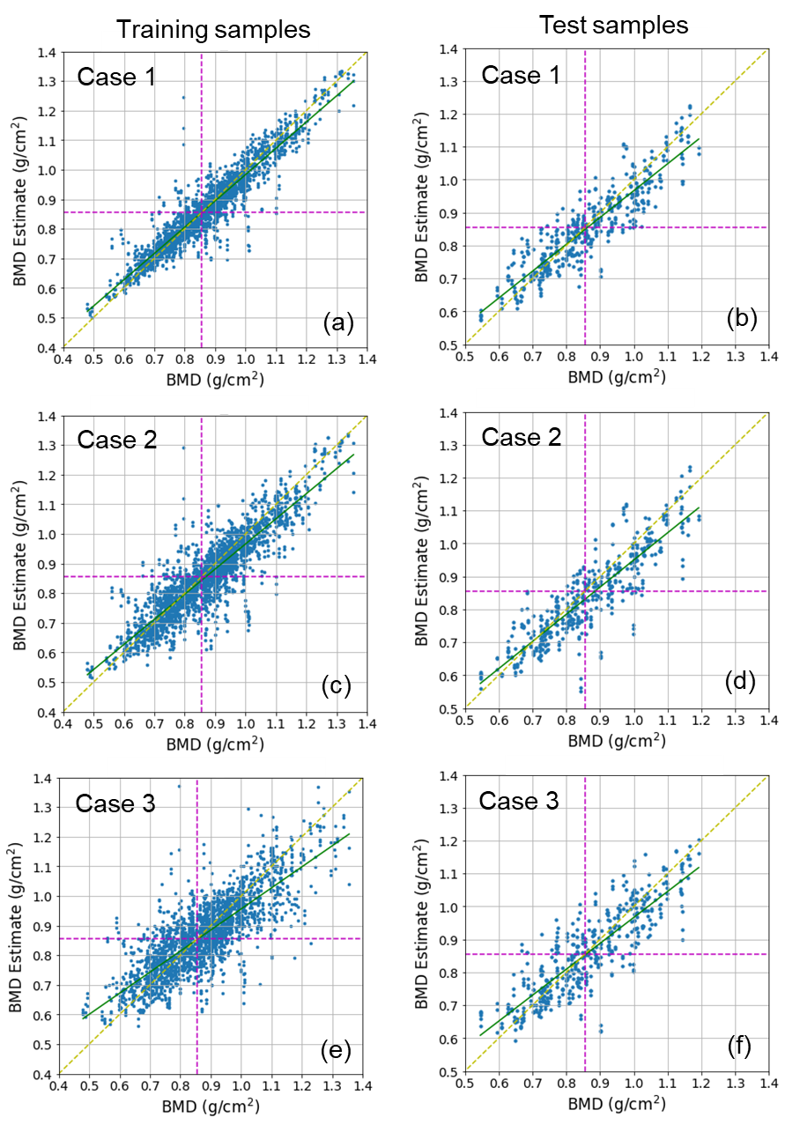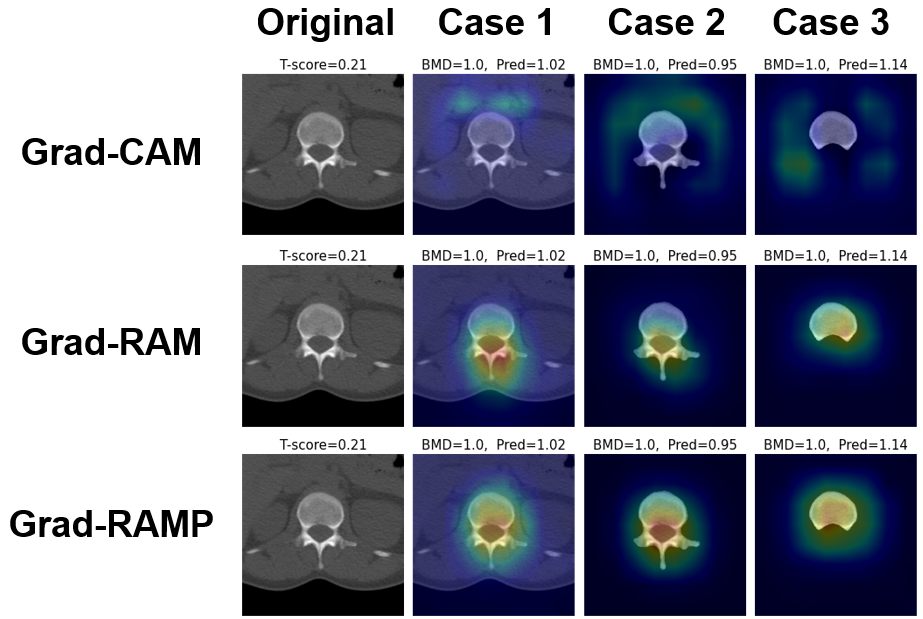BMD prediction
Bone mineral density (BMD) prediction in CT images based on deep residual CNN + XAI Interpretation
Workflow
L1 Segmentation
In order to investigate which area had a great impact on the prediction of BMD, we divided the experiment into three cases.
Case 1 : Cropped imagesCase 2 : Entire-vertebrae-masked imagesCase 3 : Vertebral-body-masked images
U-Net-based model was applied to segment the L1 region.

BMD Prediction
Deep resiudal CNN for BMD estimation.
We achieved a maximum correlation coefficient of 0.905 for the test set.
- Estimation Network
- Estimation Result
XAI Interpretation
Grad-CAM is well-known XAI technique used to investigate the attention of a DL network toward an image.
We modified Grad-CAM for this study because it is specialized in a classifer, whereas our network is an estimator (regressor).
Grad-RAM converted the ReLU operator in Grad-CAM to an absolute operator because it considered the features that have a significant impact on the estimate, regardless of the direction (sign) of the gradient.
Grad-RAMP multiplied each gradient with respect to every pixel
-
$k$ : Channel index of the convolutional layer -
$\alpha_{k}(i,j)$ :$k$ th weight -
Z : The number of pixels in the feature map
-
$A_{k}(i,j)$ : Feature map of the last convolutional layer -
$\odot$ : Hadamard product operator -
XAI result



